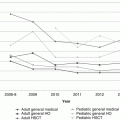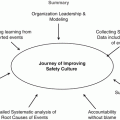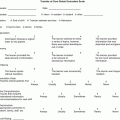Presence of complex chronic or life-limiting condition
Difficult pain or physical symptom management
Emotional or social distress
Unable to perform activities of daily living resulting in poor quality of life
Patient, family, or healthcare team with differing views and/or understanding regarding prognosis
Family/staff moral distress
Ethical conflicts
Conflicts regarding use of medical interventions in cognitively impaired, seriously ill, or dying patients
Disrupted or fragmented communication resulting in challenges delivering quality medical care
Frequent hospitalizations
Prolonged hospitalization
Need for end-of-life care coordination
Need for hospice resource utilization
Early Integration of Palliative Care into the Care of Children with Cancer, Blood Disorders, and Undergoing Bone Marrow Transplant
Palliative care is appropriate at any age and at any stage in a serious illness and can be provided together with curative treatment [3]. In a remarkable phase III random controlled study published in 2010, Temel et al. describe the benefits of early integration of palliative care into the treatment of patients with metastatic non-small cell lung cancer (NSCLC) [4]. Patients had significant improvement in mood and even survival in the group that received support by palliative care from the beginning. For children with cancer, early integration of palliative care allows for improved symptom control, parental adjustment, and preparation for the end-of-life period [5]. Additionally, integrating palliative care as early as at the time of diagnosis for children with high-risk malignancies has been found to be feasible and acceptable to families [6].
Two major barriers remain to early palliative care for all pediatric cancer patients. One is the medical culture and attitudes that create a false dichotomy between curative therapy and palliative care [7]. The other is the lack of access to palliative care teams and/or the inability of a specialty team to fully meet the patient care demands. Currently only 58% of Children’s Oncology Group institutions report having a pediatric palliative care team [8]. A combination of generalist or primary palliative care together with specialty consultation when needed is the most sustainable model [9]. A dedicated palliative care team is still essential, but innovative models of integration will allow for the most efficient use of those resources. A significant proportion of palliative cancer care can be provided by the primary cancer care team; and consultation with palliative care specialists may range from a single consultation about a specific issue to several encounters or ongoing involvement until death and into the period of bereavement [10]. Further study is needed to better understand the proportion of pediatric oncology patients who require this level of specialty palliative care consultation, and this figure will vary between institutions based on the primary team composition, competencies, number of clinicians, burden of clinical demand, and clinician skills in advanced symptom control [11].
Team Approach to Integrated Individualized Care Planning
There are vast differences in the size and composition of palliative care teams across the country. Teams are largely dependent upon the size of the institution, as well as its staff, resources, monetary constraints, and culture.
In 2013, the American Academy of Pediatrics (AAP) published guidelines [12] recommending that all hospitals and large healthcare organizations that frequently provide care to children with life-threatening conditions should have dedicated interdisciplinary specialty pediatric palliative care teams. Per these guidelines, the team should have “sufficient collective expertise to address the physical, psychosocial, emotional, practical, and spiritual needs of the child and family.” [12]
The AAP further recommends that in order to ensure quality and safety, teams must have an adequate number of dedicated staff who are ideally trained in palliative care and who must be paid specifically to provide pediatric palliative care [12]. This team should be available for consultation at any time, 24 h a day, and 7 days a week. Establishing this minimum capacity should be the focus of initial improvement efforts in any center that does not yet have a dedicated palliative care team.
With such a broad spectrum of expertise required, the AAP suggests that a mature team should include physicians, nurses, social workers, case managers, spiritual care providers, bereavement specialists, and child life specialists. Table 18.2 distinguishes between the responsibilities and roles of these various palliative care providers. As illustrated in the table, each provider on the team provides distinct expertise and patient support. Although there are inherent differences in these roles, overlap and collaboration among these services is essential for unified, interdisciplinary care [4].
Table 18.2
Distinctions in expertise between palliative care providers
Medicine/physician | Address medical needs such as pain and symptom management |
Explain the implications of these medical interventions | |
Take the lead on framing the illness trajectory and prognosis | |
Take on special role interacting with other medical specialties | |
Nursing | Clinical support and hands-on care |
Teaching families how to best provide care for their children | |
Support other staff at bedside | |
Social work | Address broad spectrum of factors that influence families, such as housing, transportation, and family dynamics |
Provide psychosocial/emotional and bereavement supports | |
Child life | Provide psychosocially driven intervention that promote coping through play, preparation, education, and self-expression activities for both patient and siblings |
Pastoral care | Support spiritual needs of child and family |
Access supports specific to a family’s religious belief and values | |
Communicate spiritual needs of family to care team for considerations in care plan |
Typically, a palliative care team is led by a physician who is board certified in Hospice and Palliative Medicine. The American Board of Pediatrics is only one of ten boards which participate in subspecialty certification in Hospice and Palliative Medicine. However, unlike the majority of medical subspecialties, leadership can shift between the various professionals involved. The palliative care team is encouraged to be truly interdisciplinary, allowing for shifts in the prominence of each discipline as they become more or less relevant to the patient and family’s goals of care [14].
As pediatric palliative care is a new and growing field, it is understood that teams may incorporate a variety of disciplines, changing as needs evolve. The team should have access to high-quality adjunct services including psychology, pharmacology, nutrition, expressive therapy (such as music and art), and rehabilitation—including speech, occupational, and physical therapy.
As the members of a palliative care team are interdisciplinary and come from an array of backgrounds, it is important to be aware of the training that is offered for each discipline. It is not unusual for a new team to be composed of members without specialization in palliative and hospice care; however, furthering education should be encouraged for all members and available certification should ideally be acquired. In order to improve the quality of service provided, teams should set goals enabling members to pursue further certification within their respective fields, ideally on an annual basis as additional certification becomes available [15]. Some teams may choose to include ongoing CME/CEU training efforts, and/or educational efforts they provide within their hospital regarding palliative care, as quality metrics.
The Institute for Healthcare Improvement has demonstrated that a patient-centered approach that places an emphasis on coordinated care and communication has been shown to lead to improved patient outcomes, satisfaction, and associated reductions in healthcare costs [6]. We recommend that palliative care teams monitor these outcomes on a regular basis to serve as quality metric tools driving further change and continual improvement.
Care Coordination and Integrated Team Planning
Assessing and establishing goals of care are the primary tasks of the palliative care team. Included in the discussion should be the patient, when appropriate, and their family (who, when appropriate, should be determined by the patient). Prior to addressing goals of care, palliative care teams should first provide a realistic appraisal of prognosis including anticipatory guidance about likelihood of future symptoms, impairments, and mortality, as well as the timeframe in which these outcomes are likely to occur [12]. The assessment should include patient and family expectations of treatment, goals for care, quality of life, and preferences for type and site of care [16].
Interdisciplinary Team Meetings
Per the AAP Guidelines, collaboration between all involved members of the primary as well as specialty healthcare teams is essential in order to meet needs of patients most effectively. This requires that the care is integrated and not only is cure seeking and life prolonging—when in best interest of the patient—but is also comfort enhancing and prioritizes quality of life [12]. Providing this level of care therefore requires close and direct communication between all involved team members, frequently in the form of an interdisciplinary team meeting. When communication between interdisciplinary care providers is unified, “treatment decisions have a greater likelihood of being framed in common terms and delicate decision making is less likely to be abruptly undermined by an uncoordinated caregiver’s opinion.” [13] In order to facilitate harmonization of goals, there should be clear documentation of the discussions and decisions relating to advanced care planning in the electronic medical record [17].
Who should attend interdisciplinary team meetings? [13] |
Attending medical team |
Continuing subspecialty providers |
Bedside nurse |
Case manager |
Rehabilitation therapies |
Palliative care team |
May consist of physician, nurse practitioner, palliative care nurse, social worker, pastoral care, and child life specialist |
Interdisciplinary Team Sample Agenda |
Process: |
Once weekly, 1 h meeting. |
Each patient will be discussed: new patients, readmitted/reconsulted patients, continuing patients, discharged patients with any updates. |
Facilitator and time keeper assigned. |
Each discipline presents their field followed by brief team discussion: |
Medical (physician/nurse practitioner) |
Pain management |
Rehab |
Child life |
Pastoral care |
Social work |
Each discipline will document their goals and objectives in the medical record. |
How often should these interdisciplinary meetings occur? The frequency of these meetings is not officially established and depends upon the nature and progression of the course of illness. Ideally, these discussions should not take place during times of crisis; we recommend establishing a meeting prior to discharge when the patient’s health is relatively stable. However, the patient’s health status should not preclude an interdisciplinary team meeting when issues in communication among medical teams and the family arise or in times when difficult decisions surrounding goals of care need to be discussed.
Defining and Measuring Quality in Palliative Care
In 2014, the Institute of Medicine published Dying in America, a consensus report which found that improving the quality and availability of medical and social services for patients and their families at the end of life could not only enhance quality of life through the end of life but could also contribute to a more sustainable healthcare system [18]. This report discusses the factors which hamper delivery of high-quality end-of-life care, but also discusses opportunities for improvement within the healthcare system and palliative care teams. Yet the benefit derived from involvement of a palliative care team can only be demonstrated when the team evaluates and measures its performance. In many centers, palliative care teams are in developmental stages and may struggle to identify the best ways to evaluate performance. A vision and/or mission statement paired with program goals is often the starting place of structural assessment. Figure 18.1 provides a sample mission and vision statement with program goals for a typical palliative care team.


Fig. 18.1
Example of a mission and vision statement with program goals
The initial efforts toward defining quality in the field of palliative care began in 2001 at a meeting of the National Consensus Project [16]. This collaboration of six major hospice and palliative care organizations, including the AAHPM (American Academy of Hospice and Palliative Medicine), CAPC (Center to Advance Palliative Care), HPNA (Hospice and Palliative Nurses Association), NHPCO (National Hospice and Palliative Care Organization), NASW (National Association of Social Workers), and NPCRC (National Palliative Care Research Center), resulted in the Clinical Guidelines for Quality Palliative Care, which described the core concepts and structures for quality palliative care, including eight domains of practice. “Domains” of practice are broadly defined as areas within which to develop outcome and process measures for palliative care and hospice programs. The 2009 revision of these guidelines further described the domains and reflected ongoing collaboration between major organizations. The third edition of these guidelines, released in 2013, explicitly includes neonates, children, and adolescents (see Table 18.3) [16].
Table 18.3
National Consensus Project domains of care
National Consensus Project domains of care for palliative care | |
|---|---|
1. Structure and processes of care | Guidelines within this domain detail the meaning of interdisciplinary teams and family-centered care. All families should have access to palliative care expertise and staff 24 h a day, 7 days a week, and respite services should be available |
2. Physical aspects of care | The interdisciplinary team should assess and manage pain and other symptoms based on best available evidence within the context of disease status. This includes the use of validated measurement tools appropriate for the age of the child. Treatment of distressing symptoms and side effects should include a broad spectrum of pharmacologic, behavioral, and complementary or integrative therapies including referral to appropriate specialists as needed |
3. Psychological and psychiatric aspects of care | Care should include regular, ongoing assessment of psychological reactions related to illness including stress, coping strategies, and anticipatory grieving as well as evaluation for psychiatric conditions, especially anxiety and depression. Grief and bereavement support should be provided to all families |
4. Social aspects of care | The interdisciplinary team should perform a comprehensive social assessment to identify the social strengths, needs, and goals of each patient and family |
5. Spiritual, religious, and existential aspects of care | Communication with the patient and family should be respectful of religious and spiritual beliefs, rituals, and practices. All members of the care team should recognize spiritual distress when present and attend to this distress within their scope of practice. All patients should have access to spiritual care professionals |
6. Cultural aspects of care | Each patient receives care in a culturally and linguistically appropriate manner. Professional interpreter services should be utilized and written materials should be available in the patient/family’s preferred language |
7. Care of the patient at the end of life | Care of any patient at the end of life is time and detail intensive. This is especially true for pediatric patients. The interdisciplinary team should assess the patient for symptoms and proactively prepare the family on the recognition and management of potential symptoms and concerns. Care planning at this stage may include a hospice referral if this option is congruent with the patient and family’s goals of care |
8. Ethical and legal aspects of care | The interdisciplinary team should educate the patient and family about advanced care planning documents to promote clear communication of care preferences across the continuum of care. These documents may include designation of a healthcare proxy, inpatient and/or outpatient orders for limited resuscitation, and advance directives. Knowledge of state-specific documentation as well as guidelines for the use of such documents by minors is imperative. Ethical clinical issues should be documented and appropriate ethics consultation utilized to assist in conflict resolution as well as policy development. All care should be provided in accordance with professional, state, and federal laws, regulations, and current accepted standards of care |
Following the development of the NCP domains, the National Quality Forum (NQF) endorsed a set of 14 quality indicators for palliative and hospice care with the dual aim of ensuring provision of high-quality care as well as generating ideas for future research [19]. “Indicators” are specific tools that quantitatively assess specific healthcare structures, processes, or outcomes. Finally, the eight domains of care identified by the NCP were utilized by the Measuring What Matters Campaign [20], a consensus project of the AAHPM and HPNA, which aimed to recommend a concise portfolio of valid, clinically relevant, cross-cutting indicators for internal measurement of hospice and palliative care. The MWM campaign identified ten indicators that mapped to five of the domains of care identified in the NCP guidelines. These indicators were published in 2015 [20]. Of note, these domains and indicators have not been evaluated specifically in pediatric palliative and hospice care or the care of children with cancer. NCP domains and MWM indicators mapping to each domain, with suggested measurement sources, are summarized in Table 18.4.
Table 18.4
Measuring what matters quality indicators mapping to NCP domains, with validated sources for measurement
National Consensus Project domain | Measuring what matters indicator | Source |
|---|---|---|
1. Structure and processes of care | Comprehensive assessment Hospice: % of patients enrolled for more than 7 days for whom a comprehensive assessment was completed within 5 days of admission (documentation of prognosis, functional assessment, screening for physical and psychological symptoms, and assessment of social and spiritual concerns) Seriously ill patients receiving specialty palliative care in an acute hospital setting: % of patients admitted for more than 1 day who had a comprehensive assessment (screening for physical symptoms and discussion of patient/family’s emotional or psychological needs) completed within 24 h of admission | |
2. Physical aspects of care | Screening for physical symptoms % of seriously ill patients receiving specialty PC in an acute hospital setting for more than 1 day or patients enrolled in hospice for more than 7 days who had a screening for physical symptoms (pain, dyspnea, nausea, constipation) during admission visit | |
Pain treatment % of seriously ill patients receiving specialty PC in an acute hospital setting for more than 1 day or patients enrolled in hospice for more than 7 days who screened positive for moderate to severe pain on admission, % with medication or non-medication treatment within 24 h of screening | ||
Dyspnea screening and management % of patients with advanced chronic or serious life-threatening illnesses who are screened for dyspnea. For those who are diagnosed with moderate or severe dyspnea, % with a documented plan of care to manage dyspnea | AMA-PCPI/NCQA [24] | |
3. Psychological and psychiatric aspects of care | Discussion of emotional or psychological needs % of seriously ill patients receiving specialty PC in an acute hospital setting for more than 1 day or patients enrolled in hospice for more than 7 days with chart documentation of a discussion of emotional or psychological needs | |
4. Social aspects of care | No indicators | |
5. Spiritual, religious, and existential aspects of care | Discussion of spiritual/religious concerns % of hospice patients with documentation of a discussion of spiritual/religious concerns or documentation that patient/caregiver/family did not want to discuss | Deyta, LLC/NQF#1647 |
6. Cultural aspects of care | No indicators | |
7. Care of the patient at the end of life | No indicators | |
8. Ethical and legal aspects of care | Documentation of surrogate % of seriously ill patients receiving specialty PC in an acute hospital setting for more than 1 day or patients enrolled in hospice for more than 7 days with name and contact information for surrogate decision-maker in the chart or documentation that there is no surrogate | |
Treatment preferences % of seriously ill patients receiving specialty PC in an acute hospital setting for more than 1 day or patients enrolled in hospice for more than 7 days with chart documentation of preferences for life sustaining treatments | ||
Care consistency with documented care preferences If a vulnerable elder has specific treatment preferences documented in a medical record, then these treatment preferences should be followed | ||
Global measure | No specific measure endorsed, but committee, panels, membership, and stakeholders agreed that patient and/or family assessments of quality of are a key part of measuring quality for any setting caring for palliative or hospice care patients |
To date, although the National Consensus Project did take pediatric palliative care into account in their most recent update, there are no consensus recommendations for measures to be applied specifically to the care of children. It is also important to note that the domains and indicators listed here are primarily process driven or measures of how the team functions. Beyond pain and symptom management, and satisfaction surveys, metrics that map directly to patient outcomes remain scarce. As the field matures, we anticipate that patient- and family-level outcomes will be defined, benchmarked, and measured across pediatric palliative care programs.
A 2013 survey documented that parents and clinicians highly value many of the elements described in the NCP framework, but also described that these elements are far from universally available. Although this was a single institution study, it represents some of the gaps in care and opportunities for improvement. Highly valued elements from this survey, along with frequency of patients receiving the elements, are listed in Table 18.5 [27].
Table 18.5
Elements of palliative care delivery highly valued by parents and clinicians and likelihood of receiving the element [27]
Highly valued element | Patients that received the element (%) |
|---|---|
Structure of care | |
Involvement of palliative care specialist | 56 |
Access to 24/7 telephone advice from palliative clinician | 50 |
Access to dedicated palliative inpatient bed | 36.8 |
Access to direct admission policy to hospital | 16.2 |
Emotional, social, and spiritual aspects of care | |
Involvement of a social worker for parent | 55.4 |
Involvement of a social worker for child when appropriate | 63.1 |
Sibling support | 44.4 |
Communication | |
Discussion of death and dying with parents by healthcare team | 67.6 |
Discussion of death and dying with child by the healthcare team when appropriate | 33.3 |
Provide parents with guidance on how to talk to their child about death and dying | 37.3 |
Discussion of resuscitation status with parents by healthcare team | 82.2
Stay updated, free articles. Join our Telegram channel
Full access? Get Clinical Tree
 Get Clinical Tree app for offline access
Get Clinical Tree app for offline access

|





